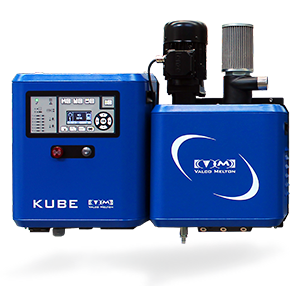Understanding the components of a hot melt system can help to ensure its efficiency and cost-effectiveness, whilst enabling proactive maintenance. Here’s a guide to what’s involved, and what to keep an eye on.
Tank
Tank based hot melt systems are used for producing large volumes of liquid adhesive for commercial production lines. The tank, therefore, needs to be able to heat the glue quickly and to a precise temperature, to ensure the transition of the molten glue to the substrate. Typical problems with tanks include overheating, which causes thermal shocking that can degrade the adhesive. Inefficient tanks tend to be expensive to run, and temperature problems frequently lead to unplanned downtime. Therefore, ensuring that the tank is properly maintained is central to the efficiency of the hot melt system.
Hoses
Hoses, which are available in various lengths, acts as transporters for the hot adhesive from the now liquid hot melt to the Glu Guns. Over time, small layers of glue can build up and create charred adhesive, so for successful operation, it is important that all hoses are kept clean. Additionally, as they handle very hot material, vital maintenance includes checking the condition of the hose. Cracked hoses can lead to a very sticky and expensive mess!
Filters
Filters ensure that no lumps enter various parts of the system. Lumps – known as charring – are created when too much heat causes the adhesive polymers to deform and coagulate. If the tank is overheating, or is left on overnight, the mixture can produce large quantities of char. When this blocks the filters, the entire process grinds to halt. Therefore, regular cleaning is essential.
Guns
Glue guns enable the adhesive melt to be correctly applied. A familiar challenge for hot melt operators is the efficiency of the trigger, with springs losing their usability over time. Gun nozzles can also become clogged with cooled glue, gradually reducing their efficiency until they stop working altogether. As such, glue guns need to be checked, cleaned, and maintained to ensure productivity.
Modules
Modules are used to transfer glue from the gun to the nozzle. As a moving component, the quality and condition of the module is central to the efficiency of the system. Typical problems with modules include degraded seals, hydraulic failure, and increased energy costs. The ideal module should be easy to replace and guaranteed to perform for millions of high-speed production cycles.
Nozzles
The accuracy of adhesive application depends on the quality and condition of the nozzle. Nozzles are prone to collecting layers of hardened glue, which can reduce both the efficiency and the uniformity of the adhesive beads. This can lead to production inaccuracies, increased wastage, and delays. Therefore, nozzles should always be cleaned after use, and productivity-focused companies should keep a supply of spares on hand.
Cleaning and maintenance
All hot melt systems are vulnerable to charring. Charring is caused when glue clumps together, which can reduce the efficiency of the equipment and reduce productivity. As such, the effectiveness of hot melt systems is dependent upon regular cleaning and maintenance. The quality and temperature setting for the adhesive is also linked to the amount of charring, with investment in better adhesive and hot melt system parts translating to high-quality results.
Find out more
Hot melt systems have multiple parts that require maintenance to ensure efficiency and productivity. For replacement parts, high-quality adhesives, and advice about system maintenance, get in touch with one of our servicing team by phone or email.
